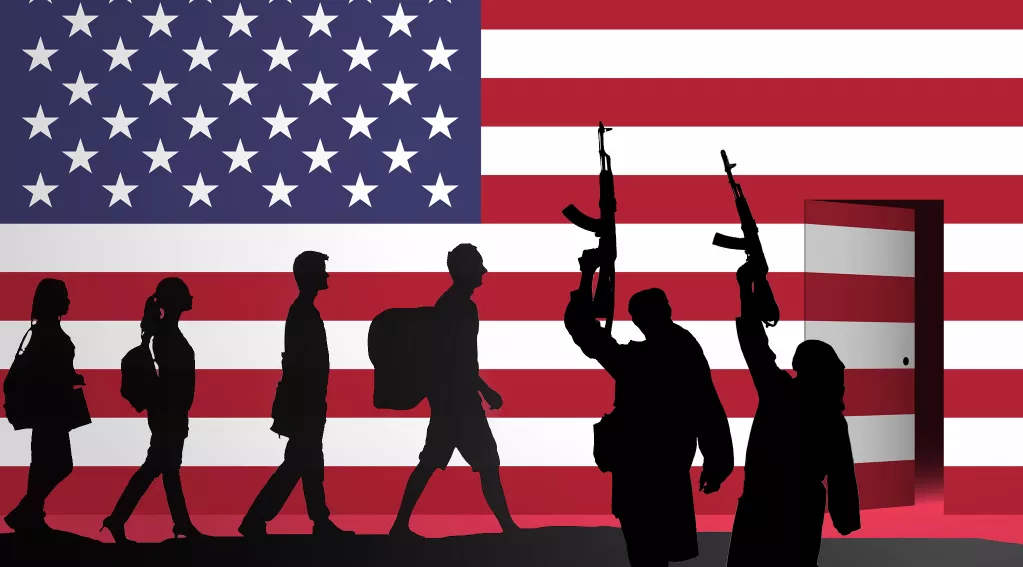Immigration Vetting Failures That Allowed Terrorists Into U.S., With More to Come

The first publicly accessible database of foreign nationals who entered the U.S. since 2008 with terrorist connections points to preventable vetting failures in 47 different cases. The compendium makes for reading that is both chilling and exasperating.
Twenty-two years after the 9/11 attacks, feckless immigration policies and enforcement gaps continue to compromise national security and endanger American citizens. Consider a sampling from the database:
Malik Faisal Akram – The British subject used the visa-waiver system between the United Kingdom and the United States to apply electronically for fast-track, visa-less entry in 2020. He traveled to Dallas to wage a kidnapping-hostage attack at a synagogue, demanding the release of a locally imprisoned terrorist. Akram was killed by FBI agents in the ensuing siege.
Naif Abdulaziz M. Alfallaj – The Saudi Arabian entered on an F-2 visa as a spouse of a foreign student in 2011, covering up his activities at an Al Qaeda compound in Kandahar, Afghanistan. He made multiple trips in and out of the U.S., and attended a flight school, which are off-limits to F-2 visa holders. His fingerprints were only run in 2017 during an FBI counterterrorism investigation. Alfallaj was convicted a year later for visa fraud.
Muhammad Mahmood Masood – The Pakistani-licensed doctor plotted a terror attack under the cover of an H-1B visa as a researcher at the Mayo Clinic in Minneapolis. He was in the country for 1 year, 11 months before his clandestine activities were detected. Masood was convicted last year for material support for terrorism.
El Mehdi Semlali Fathi – This Moroccan citizen applied for an F-1 student visa, then sought asylum (based on fraudulent persecution claims) and was granted asylum. After five years in this country, Fathi was arrested for plotting to bomb targets inside the U.S. using bombs attached to unmanned aerial vehicles.
The database goes on to identify spies, warlords and a child rapist who benefited from U.S. security lapses. Fifteen cases involved failures by two or more immigration agencies, and the average time before discovery was five years. Note also that agencies under the sprawling Department of Homeland Security (DHS) admitted these shady individuals in the first place, but were only tangentially involved in their apprehensions.
To its credit, the Biden administration continues to fund the National Vetting Center, which ostensibly enhances investigations through greater sharing of intelligence and less proprietary “stove-piping.” But the output is only as good as the input, and criminal records for arrivals from Third World countries are typically thin to non-existent.
Meantime, President Biden and DHS Secretary Alejandro Mayorkas, who claims he lacks necessary resources, compound the problem by flooding this country with record numbers of migrants who are loosely vetted at best. This reckless mass immigration agenda increasingly jeopardizes national security by straining law enforcement past the breaking point.
Expect the terrorist database, and the threats, to keep growing.

